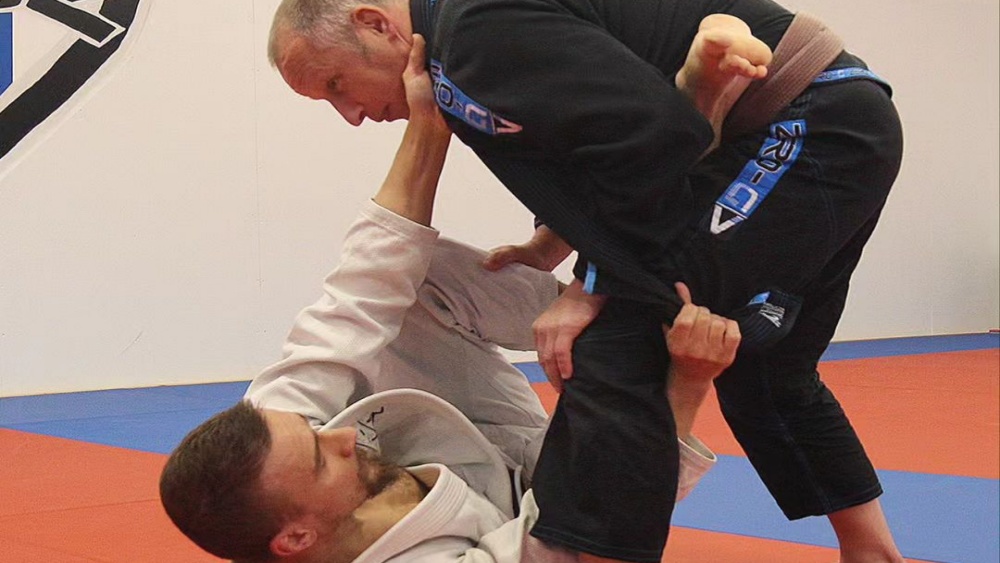Guest post by Evolve MMA, Asia’s premier championship brand for martial arts. It has the most number of World Champions on the planet. Named as the #1 ranked martial arts organization in Asia by CNN, Yahoo! Sports, FOX Sports, Evolve MMA is the top rated BJJ gym in Singapore.
The addition of lapel grips significantly changes how BJJ is played. It is a catalyst for innovation as far as sport BJJ is concerned. There are numerous ways to utilize Gi grips, with some techniques already at our disposal and some waiting to be discovered. As part of the advancement in modern Jiu-Jitsu, grapplers need to adapt and tackle the developments that come with the sport’s evolution. In this article, we will talk about a unique position known as the squid guard.
Lapel Guards In BJJ
In Gi Jiu-Jitsu, the lapel is a key ingredient in guard play. Positions like the De La Riva, worm, galaxy, and squid guard are techniques that rely on using the Gi to control and subdue an opponent’s movement. Such guards enable you to manage a fully resisting opponent while creating opportunities to attack back. The great thing about the lapel is that it can be used as an extension of our body, allowing us to wrap it around the opponent for sweeps or submissions.
Furthermore, lapel guards allow you to break the opponent’s posture by attacking their upper or lower body. This enables you to transition to other open guards or advance to more dominant positions. While doing so may sound pretty simple, lapel guards require practice, as these techniques are highly technical and rely on proper grips and body positioning. This gives importance to the essence of grip control to maintain the distance between you and the opponent.
Once a lapel player gets their preferred grips, it will be challenging for even the most formidable opponent to resist. Because of its inherent complexity, many grapplers find lapel guards cheap or even unfair to deal with.
What Is The Squid Guard?
The squid guard is a guard variant developed by the talented BJJ superstar Keenan Cornelius. The squid guard is an effective partner to other forms of lapel guard (such as the worm guard), especially if the opponent backsteps the leg you want to control (near leg). As the opponent back steps, it leaves their far leg in the same position, which now becomes the target of the squid guard.
The squid guard is a guard technique using the opponent’s lapel. From the worm guard, where you control the opponent’s lapel below their near leg, you need to move the lapel below the opponent’s far leg and wrap it around to go to the squid guard. Doing so allows you to control their leg and break their posture by pulling the lapel down, which opens up different opportunities for sweeps.
How To Perform The Squid Guard
Starting from the open guard, grip the opponent’s right lapel with your left hand (cross grip). Before going for the position, control the opponent by placing your feet on their shoulders or hips while pulling on their lapel. Once the lapel is secured, start looking to underhook the opponent’s right leg with your right hand, similar to grabbing behind the opponent’s knee in an Imanari roll. Put your right foot past the opponent’s right hip. Turn your body near their right leg by swinging your left leg to help you rotate.
Though you are not inverting, your body turns upside down, placing your head beside the opponent’s right foot. While maintaining the grip on the opponent’s right lapel with your left hand, transfer it to your right. This puts the opponent’s right lapel to your right hand behind their right knee while wrapping it around your right leg posted on the opponent’s right hip. This grip is hard for the opponent to break, making it challenging for them to posture up because of the friction and firm grip control. This now puts you in the squid guard position.
The squid guard, in many ways, looks like the lapeloplata. The difference is, with the lapeloplata, your leg is deeper on the lapel as you have an omoplata-like bite on the opponent’s lapel. This changes the dynamics of the guard and limits your ability to execute various sweeps.
With the firm control established from the lapel grip with your right hand, if the opponent stands up, you can use your left hand to pull the lapel down to keep their posture broken. While numerous sweeps can be initiated from this position, you can always return to the original squid guard position. Switch grips with your palm facing away so you can swing around. Going back allows you to control the opponent in different ways, as the lapel grip lets you control the opponent in multiple directions at once, creating instability. You can only control the opponent linearly in a standard grip like the sleeve grip.
One thing you need to avoid is to prevent the opponent from stepping over your left foot and squatting down, similar to how the top foot is placed in the headquarters position. An excellent feature of the squid guard is it is one of the safest guards in all of Jiu-Jitsu as long as you maintain a firm lapel grip. No matter where the opponent puts your free leg, they can only pass your guard once they break the lapel grip, even if they force the half guard and smash it.
A good tip is to use your free hand depending on how the opponent reacts. From the squid guard, you can also mix it with different open guards with your free hand and leg, such as the De La Riva and lasso. As long as you keep the lapel grip behind the opponent’s knee, and your foot passes the opponent’s hip, you will be in a solid spot, and if they pressure forward, you can frame against their hip to push them back.
Conclusion
Lapel guards are some of the best innovations in BJJ over the past couple of decades. While it leans more on the sporting side of the art, studying and incorporating lapel variations like the squid guard is always worth trying, as not all competitors have the skill and knowledge to counter them.
Kauan Barboza is here to pull back the curtain on the Modern Lapel game.
- Learn to use Lapel from positions you already know, like closed guard!
- Cover entries into the Lapel Guard from De La Riva, Spider, and closed guard.



















